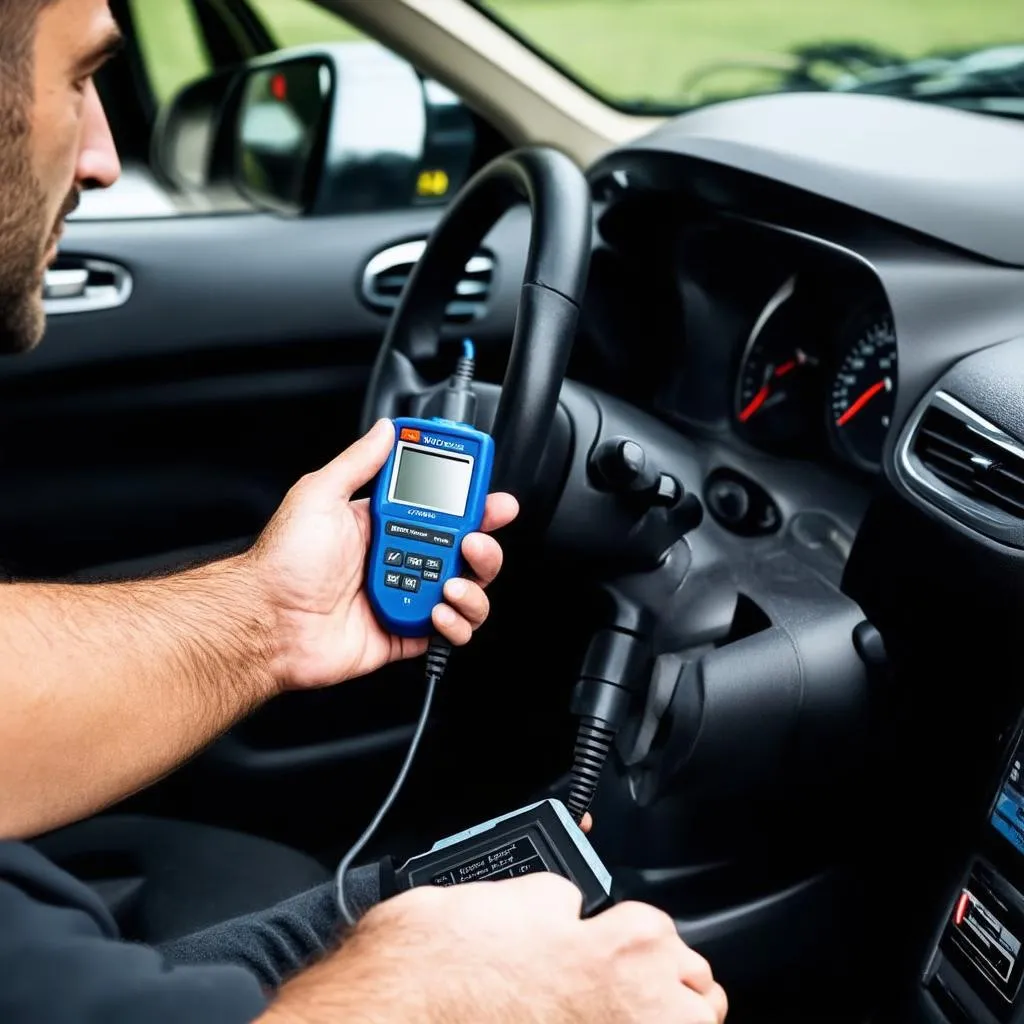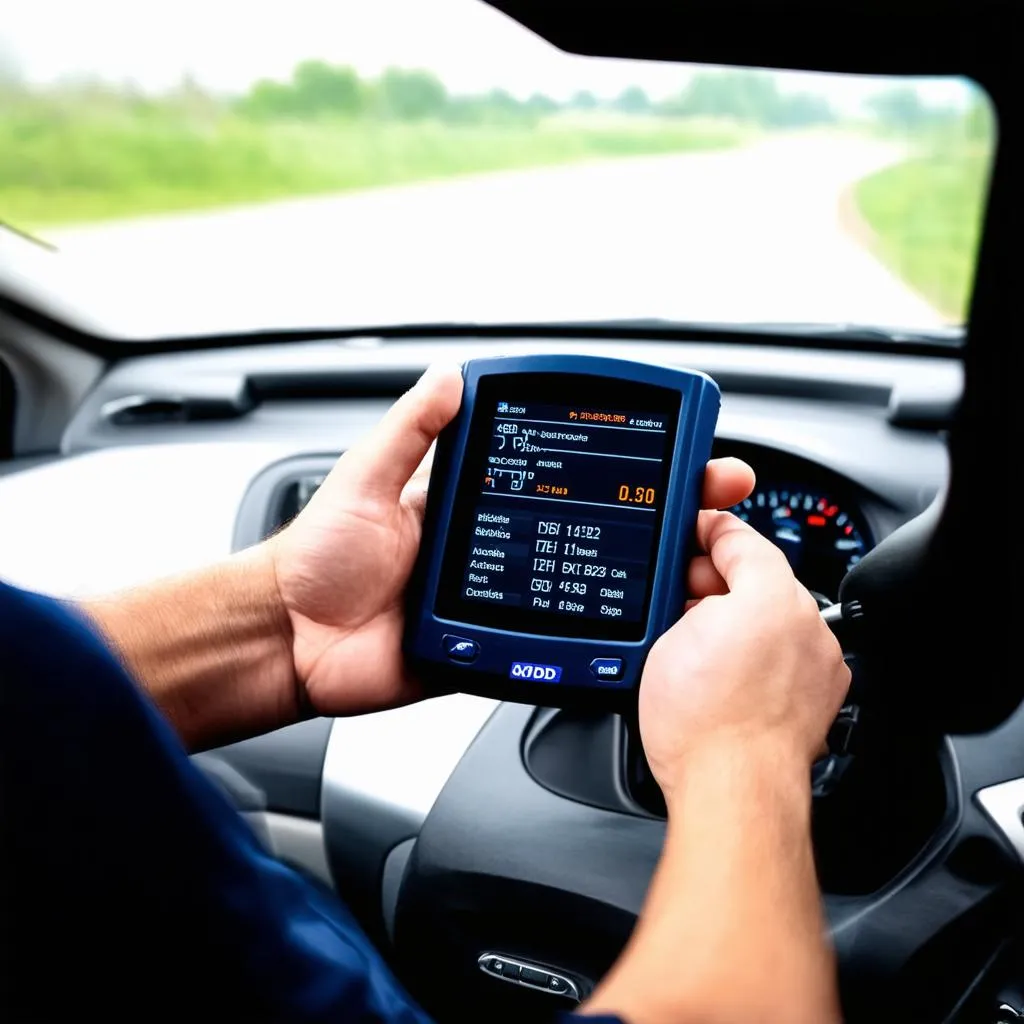“If it ain’t broke, don’t fix it,” the old saying goes. But what if your car is acting up, giving you subtle hints of trouble that you just can’t quite put your finger on? That’s where an OBD (On-Board Diagnostics) reader comes in, and it’s more than just a tool for checking engine lights. It’s a window into your car’s soul, revealing vital information that can help you diagnose problems and keep your ride running smoothly.
What Does “OBD Reader Only For Engine” Really Mean?
This question is often sparked by the common misconception that OBD readers are exclusively for engine diagnostics. While it’s true that OBD readers were initially designed to access engine control modules (ECMs), their capabilities have expanded significantly. Think of it like the evolution of smartphones: from basic calling and texting to a myriad of apps and functionalities.
Delving Deeper: The OBD2 Protocol & Beyond
Modern vehicles adhere to the OBD2 protocol, a standardized communication system that allows OBD readers to access and interpret data from various modules within the vehicle. This includes:
- Engine Control Module (ECM): This is where the majority of OBD diagnostics focus, providing insights into engine performance, fuel efficiency, emissions, and more.
- Transmission Control Module (TCM): This module governs the transmission’s behavior, and an OBD reader can help diagnose issues like gear slippage, rough shifting, and transmission codes.
- Anti-lock Brake System (ABS) Module: OBD readers can access ABS-related data, helping troubleshoot brake system malfunctions.
- Airbag Control Module: The airbag module stores crash data and can identify potential airbag deployment issues.
- Climate Control Module: Even the temperature inside your car is controlled by a module, and OBD readers can reveal information related to climate system malfunctions.
Unraveling the Secrets: What OBD Readers Reveal
Imagine you’re working on a complex puzzle, and each piece provides a vital clue to solving the bigger picture. OBD readers act as those crucial pieces, revealing hidden data points that can help you understand:
- Trouble Codes: These are like cryptic messages from your car’s internal systems, indicating potential malfunctions.
- Live Data: OBD readers can display real-time sensor readings, such as engine speed, coolant temperature, and fuel pressure, providing valuable insights into your car’s performance.
- Vehicle History: Some OBD readers can access historical data, such as the number of times the airbag has been deployed or the frequency of engine warning lights.
- Advanced Functionality: More sophisticated OBD readers offer advanced features like graph analysis, data logging, and even the ability to clear trouble codes.
OBD Readers: A Gateway to Understanding Your Car
Now, let’s break down some frequently asked questions:
Q: Can I use an OBD reader to diagnose problems with my car’s radio or navigation system?
A: While OBD readers are primarily designed for vehicle systems, the answer isn’t always a straightforward “no.” Some advanced OBD readers, particularly those designed for specific car models or equipped with custom software, might be able to access information related to infotainment systems. However, it’s crucial to understand that OBD readers aren’t designed to troubleshoot complex electronics like radios or navigation systems.
Q: What if my car is older than 1996? Can I still use an OBD reader?
A: The OBD2 standard was mandated in the United States for all vehicles manufactured after 1996. For older vehicles, you might need a specialized OBD1 reader, but accessing data may be limited compared to OBD2.
Q: I have a European car. Does an OBD reader work with it?
A: Most OBD readers are compatible with European cars, but it’s always wise to check the compatibility before making a purchase. For European vehicles, you may need a specialized reader that can handle different protocols or languages.
Q: Does using an OBD reader require technical expertise?
A: While OBD readers are designed to be user-friendly, some knowledge of vehicle systems can definitely enhance your experience. There are numerous online resources, tutorials, and even apps that can guide you through the process.
Q: Is using an OBD reader legal?
A: Yes, using an OBD reader is legal, and in fact, it’s a great tool for responsible car ownership.
Beyond the Engine: The Holistic View
Just like in traditional Chinese medicine, which focuses on the interconnectedness of the body, modern automotive diagnostics emphasize a holistic view of the vehicle. An OBD reader is a powerful tool that allows you to see beyond the surface level of engine performance and gain insights into the overall health of your car.
 obd reader car
obd reader car
 obd reader data
obd reader data
The Next Steps: Your Journey to Automotive Awareness
So, Are Obd Readers Only For Engine diagnostics? The answer is a resounding no. They are powerful tools that can provide insights into a wide range of vehicle systems. By understanding the principles of OBD technology and exploring the data it reveals, you can gain a deeper understanding of your car’s inner workings and take control of your automotive experience.
Looking for More Information?
For further exploration into OBD readers and their capabilities, check out these related articles:
Need help with diagnostics or have questions about OBD readers?
Don’t hesitate to contact us via WhatsApp: +84767531508. Our team of automotive experts is available 24/7 to assist you.
Remember, understanding your car is the first step to keeping it running smoothly and enjoying a trouble-free driving experience.